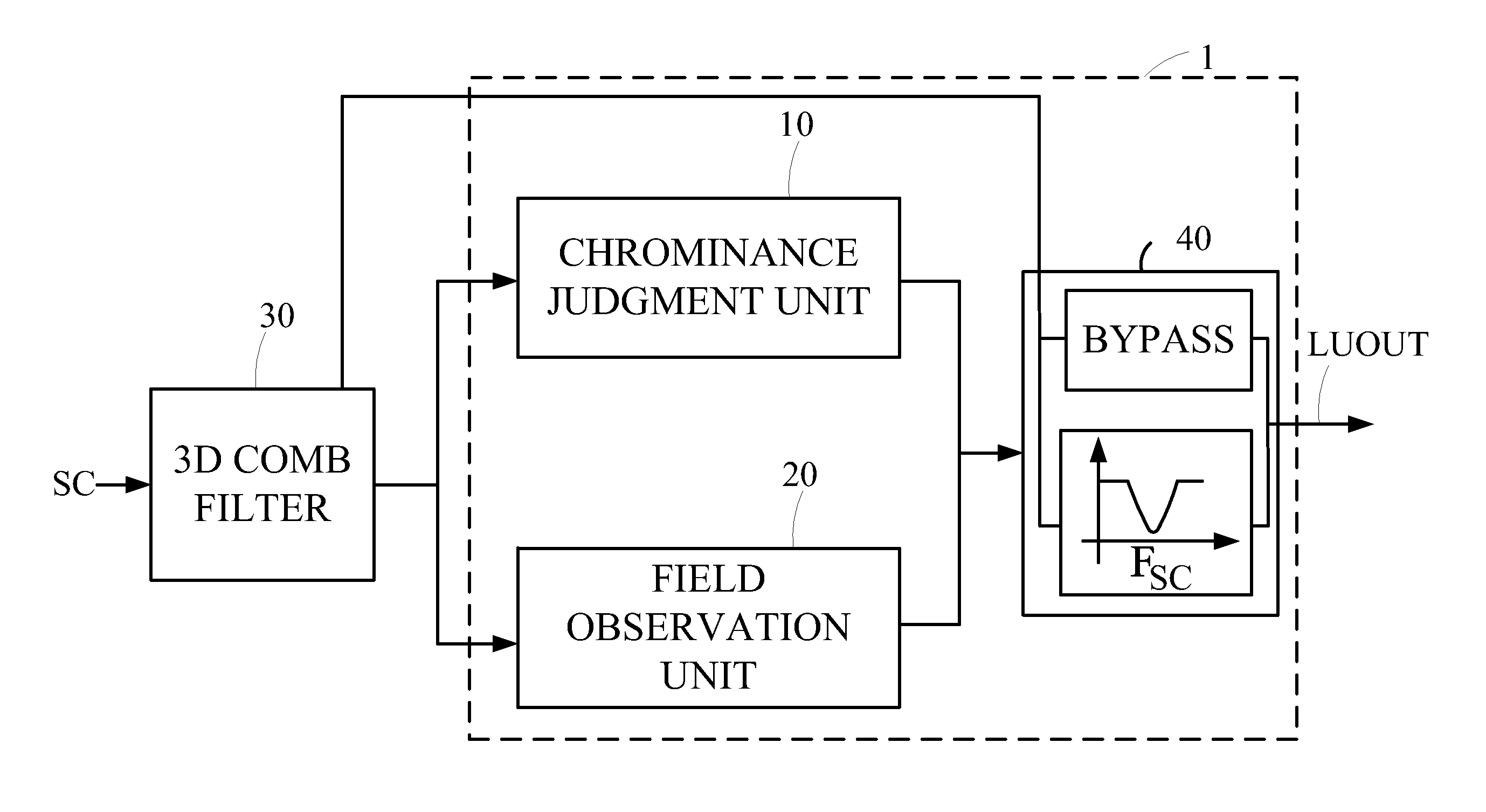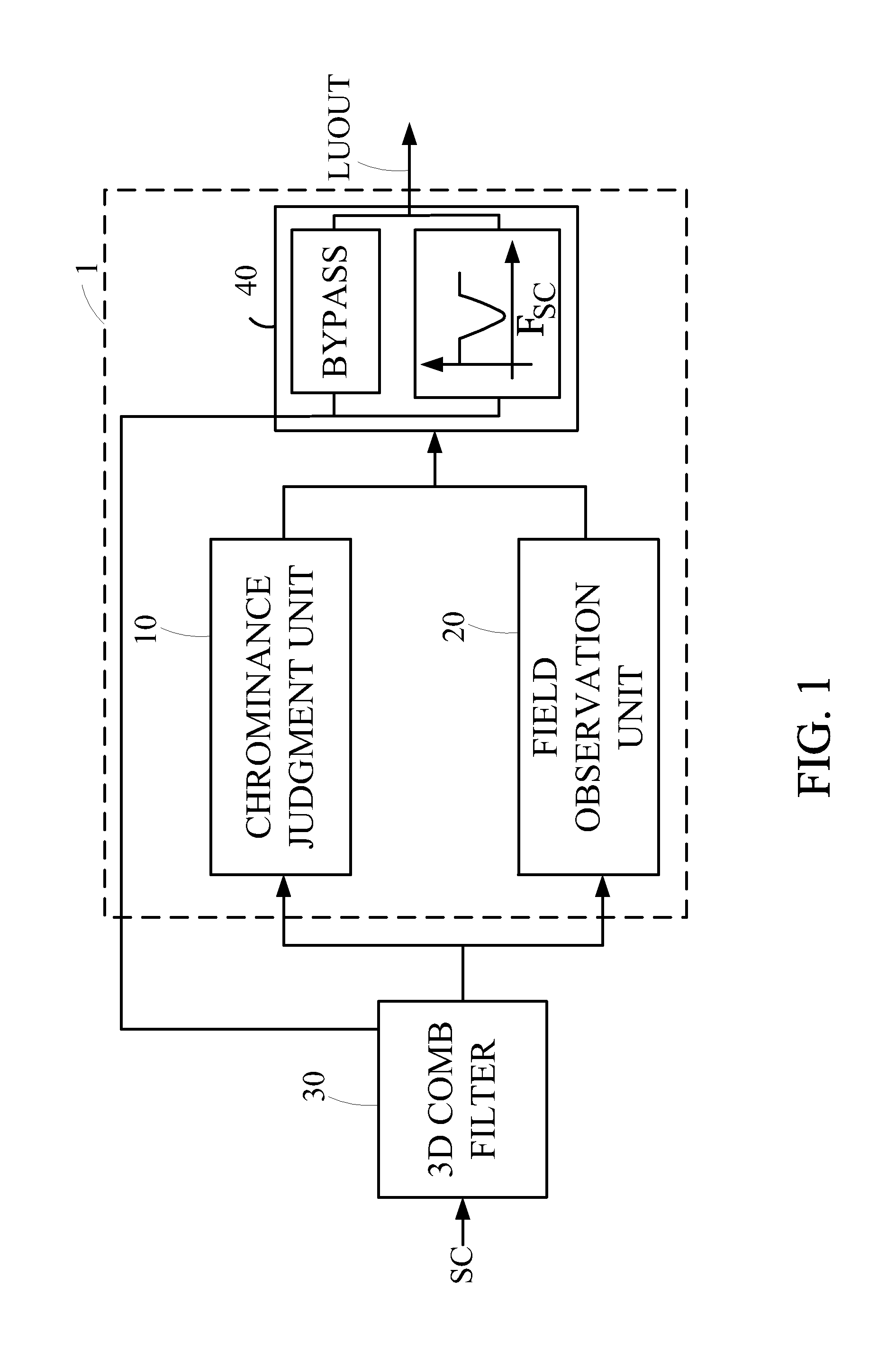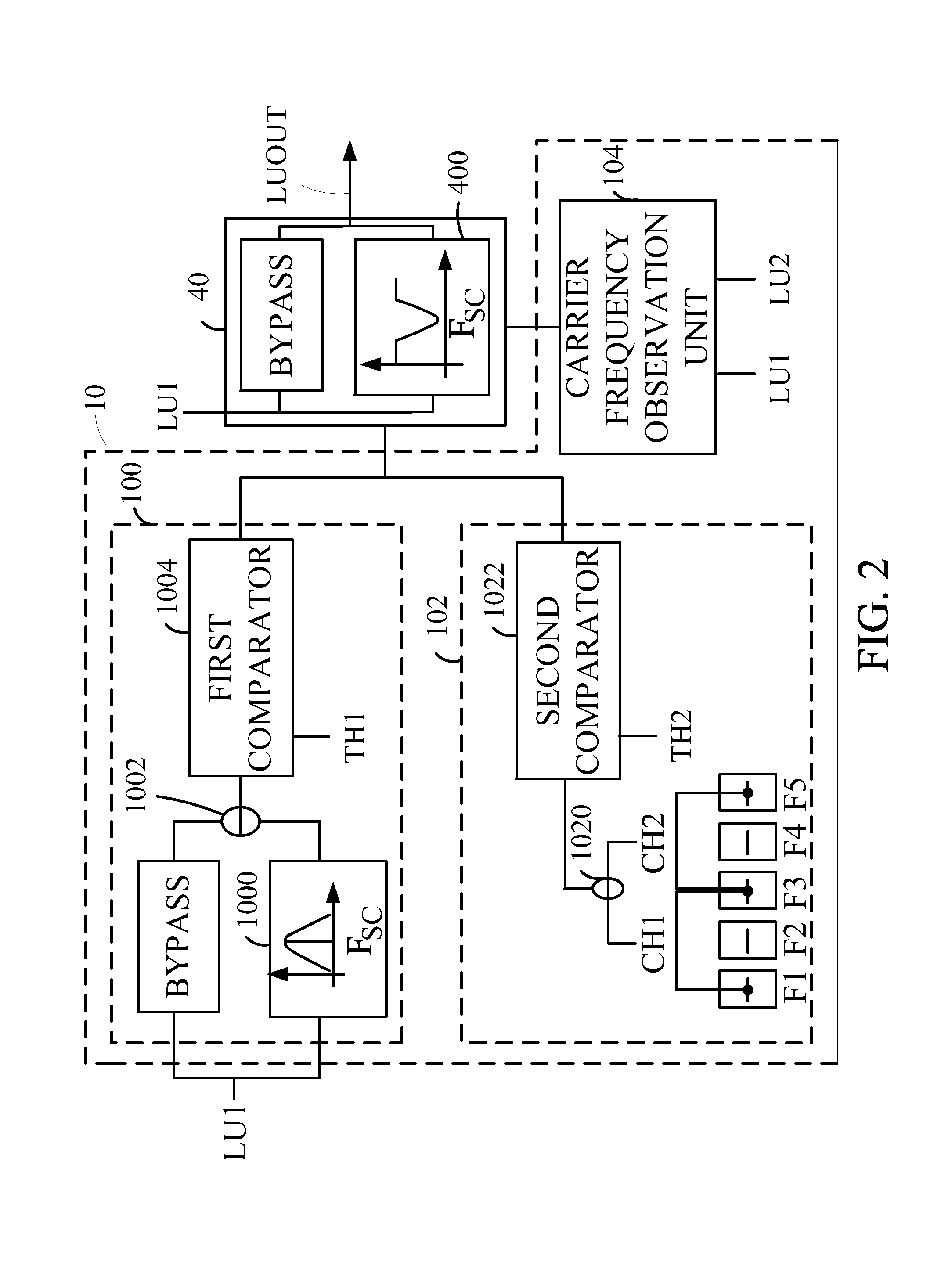Device for outputting luminance signal
- Summary
- Abstract
- Description
- Claims
- Application Information
AI Technical Summary
Benefits of technology
Problems solved by technology
Method used
Image
Examples
Embodiment Construction
[0012]FIG. 1 is a schematic diagram showing an image processing system has a device 1 for outputting a luminance signal according to an embodiment of the present invention. The image processing system comprises a 3D comb filter 30 and the device 1. The 3D comb filter 30 receives a composite video SC of a frame. The composite video signal SC has a luminance component and a chrominance component which is modulated onto a carrier frequency. A 3D chrominance signal and a 3D luminance signal are extracted from the composite video signal SC by the 3D comb filter 30. In the prior arts, the 3D chrominance signal and the 3D luminance signal from the 3D comb filter 30 are directly served as an output chrominance signal and an output luminance signal. However, when the 3D comb filter 30 is wrongly used in a motion condition, the 3D chrominance signal and the 3D luminance signal may be incorrect. The device 1 according to the present invention judges characteristics of the 3D chrominance signal...
PUM
 Login to View More
Login to View More Abstract
Description
Claims
Application Information
 Login to View More
Login to View More - R&D
- Intellectual Property
- Life Sciences
- Materials
- Tech Scout
- Unparalleled Data Quality
- Higher Quality Content
- 60% Fewer Hallucinations
Browse by: Latest US Patents, China's latest patents, Technical Efficacy Thesaurus, Application Domain, Technology Topic, Popular Technical Reports.
© 2025 PatSnap. All rights reserved.Legal|Privacy policy|Modern Slavery Act Transparency Statement|Sitemap|About US| Contact US: help@patsnap.com



